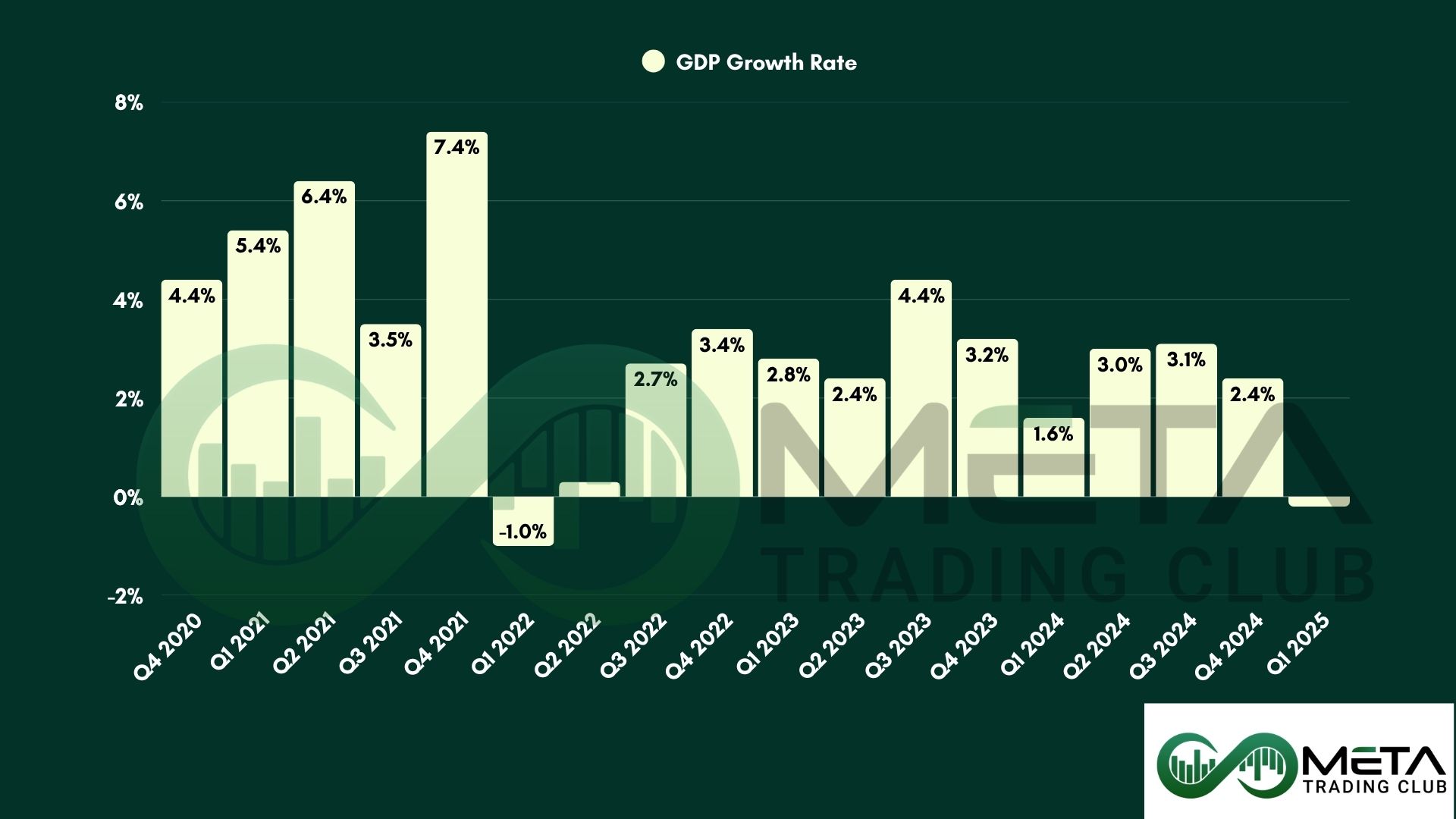The Federal Open Market Committee (FOMC) is a branch of the Federal Reserve System responsible for overseeing the nation’s open market operations. This includes making key decisions about interest rates and the growth of the United States money supply. The FOMC meets several times a year to discuss and set monetary policy, aiming to achieve maximum employment, stable prices, and moderate long-term interest rates.
Summary of FOMC Meeting on May 07, 2025
The Federal Open Market Committee (FOMC) and the Board of Governors of the Federal Reserve convened for a joint meeting on May 6–7, 2025, to review monetary policy strategies, tools, and communications. Discussions centered on inflation control and the effectiveness of policy frameworks in maintaining price stability.
Financial Market Overview
During the intermeeting period, financial markets experienced significant volatility, driven largely by trade policy developments. Long-term U.S. Treasury yields rose while short-term yields fell, steepening the yield curve.
Equity markets were volatile but ended the period flat on net, though credit spreads widened, particularly for speculative-grade debt. The U.S. dollar depreciated notably against major currencies despite rising domestic interest rates, a shift attributed to increased hedging activity and concerns that trade tensions would disproportionately impact the U.S. economy.
Monetary policy expectations shifted toward a more accommodative stance. Market-based measures suggested one to three possible rate cuts by year-end, reflecting increased concerns over recession risks and inflation.
Survey data revealed growing disagreement among market participants about the future path of interest rates. Despite market fluctuations, money markets remained stable, with no significant stress observed. The level of bank reserves remained ample, exceeding $3.2 trillion, and the Federal Reserve’s decision to slow balance sheet runoff led markets to revise expectations, now anticipating the runoff to end by early 2026.
Staff Review of the Economic Situation
On the economic front, inflation remained somewhat elevated, with headline PCE inflation at 2.3% and core inflation at 2.6% in March. Labor market conditions stayed solid, with unemployment steady at 4.2%, rising labor force participation, and moderate wage growth. Real GDP showed a slight decline in Q1 2025, but this was likely due to a surge in imports ahead of tariff hikes rather than underlying weakness. A more stable measure, real private domestic final purchases, continued to grow at a solid pace, reflecting sustained domestic demand.
Internationally, economic activity expanded moderately in Q1, partly supported by U.S. import demand, though recent data pointed to weakening momentum, especially in Canada and Mexico. Inflation abroad generally aligned with central bank targets, while China’s remained subdued. In response to trade uncertainties and slowing growth, several foreign central banks, including the ECB and the Bank of Mexico, eased policy and emphasized flexibility.
Credit conditions in the U.S. became slightly tighter for riskier borrowers amid increased market stress. Consumer credit remained accessible for most households, especially those with high credit scores. However, delinquencies rose on certain loans, particularly FHA mortgages, while credit card and auto loan delinquencies stayed elevated.
Financial system vulnerabilities were assessed as notable, particularly in asset valuations, which remain elevated in equity and housing markets. Leverage remained high in the nonbank sector, particularly among hedge funds, and while bank capital levels were strong, exposure to interest rate risk persisted. Funding risks were moderate, with mutual fund outflows in early April not leading to sustained liquidity pressures. Overall, the financial system remained stable, but continued vigilance is warranted given the evolving economic and policy landscape.
Fed’s Staff Economic Outlook
The economic outlook was revised downward compared to March, with weaker projected GDP growth in 2025 and 2026 due to the negative effects of new trade policies. These policies are expected to slow productivity and economic output, widening the gap between supply and demand. Unemployment is likely to rise above its natural rate by the end of 2025 and stay high until 2027. Inflation forecasts were raised, as tariffs are expected to drive inflation higher in 2025, with a smaller impact in 2026, before stabilizing at 2% in 2027. Economic uncertainty remains high, with recession risks nearly equal to baseline expectations, while inflation risks are expected to rise in the long term.
FOMC Members’ Views
Participants expressed concerns about uncertainty and the impact of broad tariff increases. While economic activity and employment remained stable, inflation stayed above the Federal Reserve’s 2% target and was expected to rise further due to tariffs. Businesses planned to pass higher costs onto consumers, raising concerns about sustained price increases.
The labor market showed steady unemployment and job growth, but hiring was slowing, which could signal future weakness. Wage growth declined, and inflation was likely driven by factors beyond the labor market.
Despite a slight drop in Q1 GDP, the decline was largely attributed to import surges ahead of tariffs rather than deeper economic weakness. Consumer spending grew in March, though sentiment weakened. Tariffs could reduce disposable income and increase precautionary savings, though strong household finances and lower energy costs may help offset this.
Business investment grew, but confidence among firms dropped sharply due to rising costs and supply chain worries. Small businesses and agriculture faced financial strain, though strong balance sheets and potential trade negotiations could offer relief.
Financial stability concerns included market volatility, rising Treasury yields, and a weakening dollar. Risks were highlighted in hedge fund leverage and private credit markets, though household and bank finances remained solid but exposed to potential shocks.
On monetary policy, participants agreed to keep interest rates between 4.25% and 4.5% due to persistent inflation and steady economic activity. They stressed the need for caution and continued balance sheet reductions. While inflation may remain high, potential economic slowdowns could ease price pressures, reinforcing the need for a flexible, data-driven policy approach.
Committee Policy Actions
The Federal Reserve Committee discussed recent economic trends, agreeing that activity remains solid despite fluctuations in trade affecting data. They noted stable unemployment and a strong labor market but acknowledged inflation is still slightly high. Uncertainty about the future economy has increased, with risks of both higher inflation and unemployment rising.
To maintain economic stability, the Committee decided to keep the federal funds rate between 4.25% and 4.5%. They emphasized monitoring incoming data and adjusting policies as needed to balance employment and inflation goals. Members stressed the importance of transparency and a flexible approach to monetary policy.
The Committee also reviewed financial operations, ensuring liquidity and stability in the Treasury market. They approved measures to manage reserve balances and reinvestments while continuing balance sheet reductions. No members opposed the decision.












